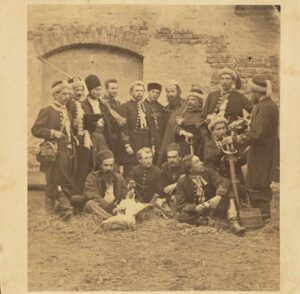Years ago, Poles, like Ukrainians today, did not want to be a Russian colony. They dreamed of their own independent country. Therefore, on 22 January 1863, they took up arms against the invader, who definitely outnumbered them in armaments and the size of the army.

There are more analogies: there was also the then “Donbas”: the so-called Taken Lands, former eastern voivodeships of the First Polish Republic incorporated directly into Russia. There were also war crimes (although not yet described in international law at that time): shooting and hanging of insurgents on the spot without trial, and torture of the captured. The sinister activity of the tsarist governor, Mikhail Muravyov – commonly referred to as the hangman (wieszatiel) – was remembered especially in the aforementioned Taken Lands.
Historians estimate that at least 15,000 people died in the Uprising, and about a thousand were executed. There were also exiles and deportations to Sybir, which affected at least 38,000 people. They were mostly young and educated persons, but also women, children and the elderly (mainly from low-class families).
Many were released from exile under successive amnesties announced by the tsar. Those sent and deported from the eastern areas were usually not allowed to return to their homes but were ordered to live in central Poland because the seized east was Russified at all costs.
About 10,000 Poles emigrated abroad during the Uprising and after its collapse.
Just like today, almost the entire public opinion in Russia at that time (even its liberal part!) supported the brutal actions of the tsarist authorities, accusing the Poles of ingratitude, betrayal of the Slavic community, and asking for help from the West…
It took another 55 years for the longed-for freedom to come in 1918. Only then, and actually only after the Polish-Bolshevik war of 1920, did many exiles return to their homeland, starting their lives anew. The descendants of those insurgents who decided to stay in the east soon faced another – this time Soviet – repression. And then came September 17, 1939…
In the Second Polish Republic, the Uprising was well remembered, and its participants who were still alive at that time were treated with almost reverential respect. Let us also remember the Uprising and the conclusions drawn from it, because history – as can be seen – unfortunately repeats itself.



